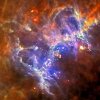XMM-Newton News Archive 2012 - XMM-Newton
XMM-Newton News Archive - Year 2012
Back to News Archive.
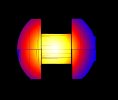
EPIC MOS1 Event of Revolution 2382
At about 06:51 hrs.UT on 11 December 2012, during XMM-Newton revolution 2382, an event was registered in the focal plane of the EPIC MOS1 instrument.
Further details on the XMM-Newton SOC pages.
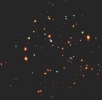
X-ray astronomers celebrate 50 years of observing the warmest sky
Only 50 years ago X-ray astronomy did not exist. The scientific community celebrates this year the first observation, in 1962, of a cosmic x-ray source apart from the Sun. ESA's x-ray observatory XMM-Newton has had a key part in the flood of breakthroughs that followed.
Further details on the XMM-Newton SOC pages.
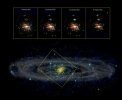
Greedy black hole discovered in Andromeda
Studying the Andromeda galaxy with ESA's XMM-Newton X-ray space observatory, astronomers have discovered a new bright X-ray source that hosts a stellar-mass black hole accreting mass at a very high rate.
Further details on the ESA Science & Technology pages.
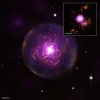
Born-again star foreshadows fate of solar system
Astronomers have found evidence for a dying Sun-like star coming briefly back to life after casting its gassy shells out into space, mimicking the possible fate our own Solar System faces in a few billion years. This new picture of the planetary nebula Abell 30 is a composite of visible images from the NASA/ESA Hubble Space Telescope and X-ray data from ESA's XMM-Newton and NASA's Chandra space telescopes.
Further details on the ESA Space Science pages.
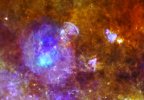
The curious shape of a supernova remnant in a star-forming cloud
Data from two ESA missions combine in a new view of the peculiar supernova remnant W44. The filamentary shell-like structure, detected by the Herschel Space Observatory at far-infrared wavelengths, is filled with hot gas that shines brightly in X-rays, as seen by the XMM-Newton X-ray Observatory. This composite image highlights how the complex morphology of this remnant has been shaped by its interaction with its parent molecular cloud, the star-forming region W48.
Further details on the ESA Science & Technology pages.
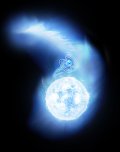
Astronomers develop new method to determine neutron star mass
Astronomers have used INTEGRAL and XMM-Newton to look into the neutron star in IGR J17252-3616, a highly obscured X-ray binary system. The data show how the neutron star is substantially deflecting the flow of the accreted material. Comparison with numerical simulations provides an estimate of the neutron star's mass, suggesting a new method to determine the mass of these extremely dense, exotic objects.
Further details on the ESA Science & Technology pages.
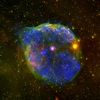
Fire burn and cauldron bubble
The cosmic cauldron has brewed up a Halloween trick in the form of a ghostly face that glows in X-rays, as seen by ESA's XMM-Newton space telescope. The eerie entity is a bubble bursting with the fiery stellar wind of a 'live fast, die young' star.
Further details on the ESA Space Science pages.
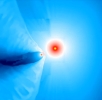
X-raying colliding stellar winds
Ground- and space-based observations, including studies by ESA's XMM-Newton X-ray observatory, have provided unique insights into a star system dominated by two Galactic giants.
Further details on the ESA Science & Technology pages.

XMM-Newton 12th Announcement of Opportunity (AO-12)
The XMM-Newton Twelfth Announcement of Opportunity is now open and observing proposals may be submitted.
The deadline is 5 October 2012, 12:00 UT
Further details here on our XMM-Newton SOC Website.
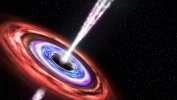
Final cry of disrupted star points to site of oblivion
Astronomers have detected tell-tale luminosity fluctuations in the X-ray signal from a star that was torn apart and devoured by the supermassive black hole at the centre of a distant galaxy. The discovery, based on data from ESA's XMM-Newton and the Japan/US Suzaku space observatories, has allowed astronomers to probe the details of matter accretion onto a supermassive black hole in the distant Universe for the first time.
Further details on the ESA Science & Technology pages.
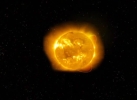
A magnetic monster's dual personality
Is it a magnetar or is it a pulsar? A second member of a rare breed of dead, spinning star has been identified thanks to an armada of space-based X-ray telescopes, including ESA's XMM-Newton. Its curious behaviour is illustrated in this animation.
Further details on the ESA Space Science Web site
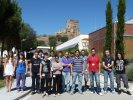
Astronomers come to ESAC to learn how to make the best science with XMM-Newton
ESA's XMM-Newton has helped create a highly active X-ray astronomical community throughout the years, thanks, among other things, to educational initiatives such as the SAS Workshop held from 11th to 15th June 2012 at ESAC.
Further details on the XMM-Newton SOC pages.
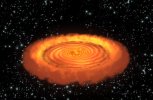
X-raying the beating heart of a newborn star
An international team of scientists has used the world's most powerful X-ray observatories - including ESA's XMM-Newton orbiter - to probe the dusty surroundings of a newborn star and discover some of its innermost secrets. These findings shed new light on one of the most fundamental processes in the Universe, the creation of stars.
Further details on the ESA Science & Technology pages.
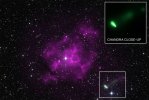
Fastest Moving Pulsar May Have Been Discovered
An international team of astronomers using three different telescopes â NASA's Chandra X-ray Observatory and ESA's XMM-Newton in space, and the Parkes radio telescope in Australia â may have found the fastest moving pulsar ever seen.
Further details on Sci-News.com

50 years of X-ray astronomy
In June 2012, X-ray astronomy celebrates its 50th anniversary, following the discovery of the first extra-solar cosmic X-ray source in 1962. The XMM-Newton team recognizes the rich heritage from which XMM-Newton has grown and joins astronomers all over the world in the celebration
Further details on the XMM-Newton pages.
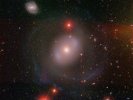
XMM-Newton reveals light 'echo' around supermassive black hole
Astronomers studying the galaxy NGC 4151 with ESA's XMM-Newton space observatory have detected X-rays emitted and then reflected by ionised iron atoms very close to the supermassive black hole hosted at the galaxy's core.By measuring the time delays occurring in these 'reverberation' events, they were able to map the vicinity of this black hole in unprecedented detail.
Further details on the ESA Science & Technology pages.

Astronomers from all over the world gathered together to discuss top XMM-Newton results
The XMM-Newton 2012 Science Workshop, held 21-23 May 2012 at ESAC, has attracted more than 110 participants from 17 countries. A key ingredient for success was the chosen topic: âGalaxy Clusters as Giant Cosmic Laboratories'.
Further details on the XMM-Newton pages.
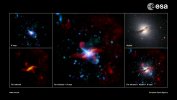
Centaurus A's far-reaching jets
These new views of the iconic Centaurus A galaxy come courtesy of two ESA missions: the Herschel Space Observatory, which has observed the galaxy at far-infrared and sub-millimetre wavelengths, and the XMM-Newton X-ray Observatory, which studied it in X-rays. By tracing very different components of the galaxy, these images highlight the complex interaction between the powerful jets stemming from the core of the galaxy and the diffuse medium that surrounds it.
Further details on the ESA Science & Technology pages.
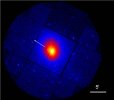
3000 XMM-Newton papers, and counting
XMM-Newton was launched on December 10, 1999. Thanks to its ability to detect more X-ray sources than any previous satellite, XMM-Newton has helped solve many mysteries of the violent Universe, from what happens in and around black holes to the formation of cosmological structure in the early universe.
Further details on the XMM-Newton pages.
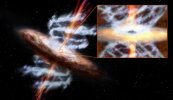
XMM-Newton measures the power of black-hole driven outflows in galaxies
Astronomers using ESA's XMM-Newton X-ray Observatory have discovered that ultra-fast outflows are quite common in active galaxies. About 40 per cent of the sources in their sample show outflows that arise from the vicinity of the central black holes.
Further details on the ESA Science & Technology pages.

Spectacularly bright object in Andromeda caused by 'normal' black hole
A spectacularly bright object recently spotted in one of the Milky Way's neighbouring galaxies is the result of a "normal" stellar black hole, astronomers have found.
Further details on the RAS Web site.
Also on the MPE Web site.
- Removed a total of (2) style text-align:center;








































 Sign in
Sign in
 Science & Technology
Science & Technology
